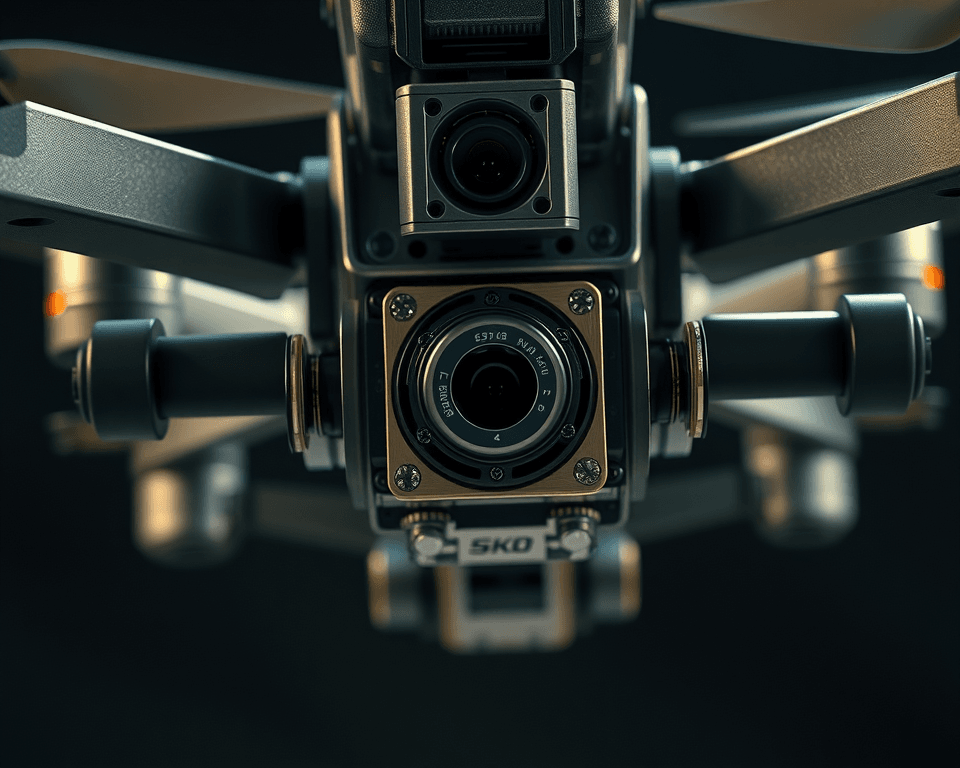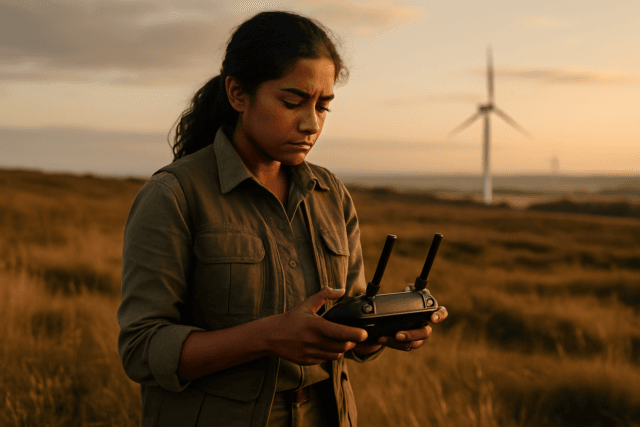A drone’s gimbal is essential for capturing smooth, stable aerial footage. It works to counteract the drone’s movements, ensuring your camera stays steady. However, gimbals can sometimes experience issues, leading to shaky or erratic video. This article explores common drone gimbal problems and provides troubleshooting steps to get your camera working smoothly again.
What is a Drone Gimbal and Why Does it Matter?
A gimbal is a pivoted support that allows the rotation of an object around a single axis. In drones, gimbals typically stabilize cameras, allowing them to remain steady regardless of the drone’s movement. This stabilization is crucial for capturing professional-quality aerial videos and photos. Without a properly functioning gimbal, footage can appear shaky and unprofessional.
Common Drone Gimbal Problems
Several issues can affect a drone’s gimbal. Here’s a breakdown of common problems and how to address them:
1. Gimbal Overload
Description: A “Gimbal Overload” error indicates that the gimbal motor is experiencing excessive stress or resistance.
Causes:
- Physical Obstructions: Dust, sand, hair, or small particles can jam the gimbal’s moving parts.
- Improper Transport: Powering on the drone with the gimbal guard still attached or transporting it without proper padding can strain the motors.
- Firmware Bugs: Corrupted updates or calibration errors can disrupt the gimbal’s control logic.
- Mechanical or Motor Failure: Worn-out motors or faulty internal wiring can lead to consistent overload warnings.
- Crash or Impact Damage: Even minor collisions can misalign the gimbal, causing strain or structural issues.
Solutions:
- Inspect and Clean: Power off the drone, remove the battery, and carefully inspect the gimbal for any obstructions. Use a blower to gently remove dust and particles.
- Check Gimbal Guard: Ensure the gimbal guard is removed before powering on the drone.
- Recalibrate the Gimbal: Follow the manufacturer’s instructions to recalibrate the gimbal. This process helps the gimbal find its center point and correct any offsets. Many apps have auto calibration.
- Update Firmware: Ensure that your drone’s firmware is up to date. Firmware updates often include fixes for known bugs and improve overall performance.
- Check for Damage: Examine the gimbal arms for cracks, bends, or loose connectors.
- Professional Repair: If the error persists after trying these steps, consider sending your drone to a professional repair service.
2. Gimbal Not Self-Stabilizing
Description: The gimbal fails to maintain a stable horizon or smooth movements.
Causes:
- Incorrect Mounting: Ensure the camera is correctly mounted to the gimbal.
- Uneven Surface: The drone may be on an unstable or uneven surface during startup.
- Calibration Issues: The gimbal may not be properly calibrated.
Solutions:
- Proper Mounting: Verify that the camera is securely attached to the gimbal.
- Level Surface: Place the drone on a stable and level surface before turning it on. Ideally, set it on the location from where it will take off.
- Gimbal Calibration: Calibrate the gimbal to ensure it correctly stabilizes the camera.
3. Gimbal Shaking or Vibrating
Description: The gimbal produces shaky or jittery footage.
Causes:
- Propeller Issues: Unbalanced or damaged propellers can cause vibrations.
- Loose Components: Screws or other components on the drone may be loose.
- Damaged Anti-Vibration Components: Vibration-absorbing plates, shock absorbers, or rubber balls may be damaged.
Solutions:
- Check and Replace Propellers: Inspect propellers for damage and replace any that are bent or chipped. Ensure they are properly balanced.
- Tighten Screws: Check all screws on the underside of the drone and tighten any that are loose.
- Inspect Anti-Vibration Components: Check the vibration-absorbing components for damage and replace them if necessary.
- Gimbal Adjustment: Make sure the square plate is under the hook.
4. Gimbal Horizon is Tilted or Drifting
Description: The horizon in the footage is not level, or it shifts during flight.
Causes:
- Calibration Errors: Incorrect gimbal calibration can cause a tilted horizon.
- IMU Issues: Problems with the Inertial Measurement Unit (IMU) can affect the gimbal’s orientation.
- Environmental Factors: Temperature changes or magnetic interference can also contribute to horizon drift.
Solutions:
- Gimbal Calibration: Perform a gimbal calibration to correct the horizon.
- IMU Calibration: Calibrate the IMU to ensure the drone is level and stable. Make sure you are outside in an area free from metal.
- Manual Adjustment: Use the drone’s app to manually adjust the gimbal’s roll and yaw settings to level the horizon.
- Check for Obstacles: Make sure nothing is preventing the gimbal from rotating.
- Contact Support: If horizon issues persist, contact the manufacturer for support, as the gimbal may be manufactured badly.
5. Gimbal Not Responding or Moving
Description: The gimbal does not move or respond to commands from the remote controller.
Causes:
- Connection Problems: Loose or damaged ribbon cables can disrupt communication between the gimbal and the drone’s main board.
- Motor Failure: One or more of the gimbal motors may have failed.
- Gimbal Board Issues: The gimbal control board may be damaged or malfunctioning.
- Software Errors: The software may have errors, preventing the gimbal from operating correctly.
Solutions:
- Check Connections: Inspect the ribbon cables for damage and ensure they are securely connected.
- Inspect Motors: Check the gimbal motors for any signs of damage or obstructions.
- Update or Reinstall Firmware: Updating or reinstalling the firmware can resolve software-related issues.
- Professional Inspection: Have a professional inspect the gimbal and replace any faulty components.
6. Gimbal Buzzing or Making Noise
Description: The gimbal emits a buzzing or vibrating sound during operation.
Causes:
- Motor Issues: The motor might have wiring problems.
- Loose Components: Parts may be loose.
Solutions:
- Dampen Oscillations: Try to dampen the oscillation of the gimbal about its vertical axis.
- Contact Support: Contact support to get professional help.
7. Gimbal Motor Overload Message
Description: The drone displays a “Gimbal Motor Overload” message.
Causes:
- Obstacles: Obstacles prevent the gimbal from rotating.
- Dust or Particles: Dust or particles may be present.
- Uneven Surface: The drone is on an uneven surface.
Solutions:
- Remove Cover: Remove the gimbal cover.
- Recalibrate: Recalibrate the gimbal.
- Clean: Check the gimbal for any dust or particles.
- Level Surface: Place the drone on a level surface.
General Troubleshooting Steps
Before diving into specific issues, try these general troubleshooting steps:
- Restart the Drone and Controller: Power cycling can often resolve temporary glitches.
- Check Firmware: Ensure both the drone and controller have the latest firmware installed.
- Calibrate the Gimbal: Use the drone’s app to perform a gimbal calibration.
- Inspect for Physical Damage: Look for any visible damage to the gimbal or surrounding components.
- Review the Drone’s Manual: Consult the drone’s manual for specific troubleshooting tips and error code explanations.
Maintaining Your Drone’s Gimbal
Preventive maintenance can help avoid many gimbal issues. Here are some tips:
- Keep it Clean: Regularly clean the gimbal and camera lens with a microfiber cloth.
- Use a Gimbal Guard: Protect the gimbal during transport with a dedicated guard.
- Store Properly: Store the drone in a dry, cool, and non-magnetic place.
- Handle with Care: Avoid rough landings or crashes that could damage the gimbal.
- Check Screws: Check that all of the screws on the underside of the drone are still tight.
Advanced Fixes and Repairs
If basic troubleshooting doesn’t resolve the issue, more advanced repairs may be necessary. These often involve disassembling the drone and replacing faulty components.
- Replacing a Ribbon Cable: If the ribbon cable is damaged, it will need to be replaced.
- Replacing a Gimbal Motor: If a motor has failed, it can be replaced.
- Replacing the Gimbal Control Board: If the control board is malfunctioning, it will need to be replaced.
Note: Advanced repairs should only be performed by experienced individuals or professional repair services. Incorrectly disassembling or repairing a drone can cause further damage and void the warranty.
Seeking Professional Help
If you’re uncomfortable performing repairs yourself, several options are available for professional drone repair:
- Manufacturer Repair Services: Contact the drone manufacturer for repair services.
- Authorized Service Centers: Look for authorized service centers in your area.
- Third-Party Repair Shops: Many independent repair shops specialize in drone repairs.
Tips for Smooth Drone Footage
Even with a perfectly functioning gimbal, some techniques can further enhance the smoothness of your aerial footage:
- Fly in Cine Mode: This mode reduces the drone’s speed and sensitivity, resulting in smoother movements.
- Use Smooth, Deliberate Movements: Avoid jerky or sudden movements with the remote sticks.
- Adjust Gimbal Speed: Reduce the gimbal’s pitch speed for smoother tilts.
- Shoot at a Higher Frame Rate: Shooting at 60fps or higher can provide more flexibility in post-production for smoothing out footage.
- Practice Smooth Walking: Practice your ninja walk because the gimbal doesn’t stabilize the up and down axis.
By understanding the common issues that can affect drone gimbals and following these troubleshooting and maintenance tips, you can ensure your camera stays steady and your aerial footage remains smooth and professional.





